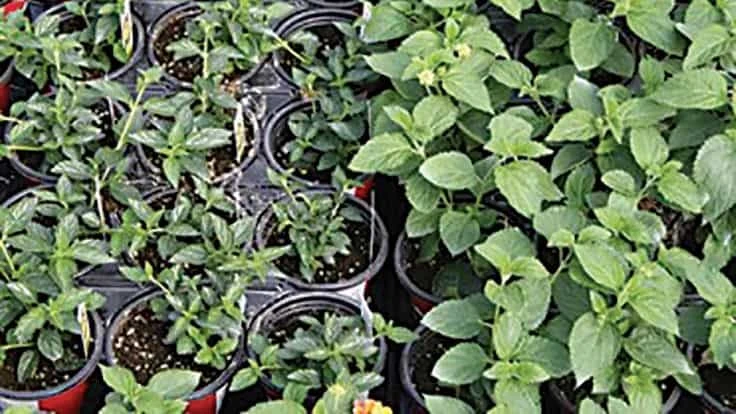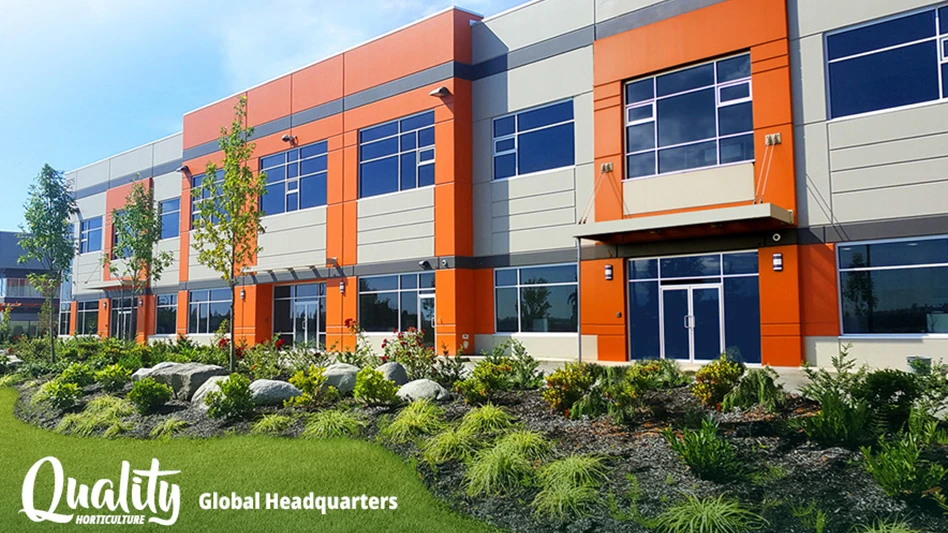

Trying to control the growth of all your different spring crops can be a challenge. With so much diversity in our greenhouses, heads can spin trying to keep all the requirements for different species and cultivars straight (Fig. 1), and plant growth regulator (PGR) strategies are no different.
There are several methods for applying plant growth regulators to your greenhouse crops, including foliar sprays, substrate drenches, liner dips, and bulb soaks. Each of these methods are effective for applying PGRs, but each have advantages and limitations.
Liner dips and bulb soaks are application techniques that are used during specific stages in production or for specific crops. Foliar sprays are the most widely used application technique, such as when young plants are transplanted into their final containers.
But, it is my belief that substrate drenches must have a spot in your PGR toolbox for controlling spring crop growth. This article is going to focus on maximizing the effectiveness of PGR drenches for controlling containerized crop growth.
Why drenches?
If foliar spray applications are so ubiquitous, why consider applying PGRs with substrate drenches? First, drenches are the application of a known volume of PGR solution to each container. This can aid in improving uniformity in growth control across the crop compared to foliar spray applications. Drenches can also provide growth control for a longer duration than sprays. While the increased duration of activity can increase the chances of overregulation if too much PGR is applied, this can be used to your advantage when applications are correctly applied.
PGR?
One of the most important aspects of applying substrate drenches is selecting the right chemical or active ingredient. When applying PGRs to substrate, you need to select PGRs that have substrate activity. Ancymidol (Abide, A-Rest) flurprimidol (Topflor), paclobutrazol (Bonzi, Paczol, Piccolo), and uniconazole (Concise, Sumagic) are the most commonly used active ingredients for substrate drenches. While chlormequat chloride (Citadel, Cycocel) does have some activity when applied to the substrate, it is not labeled for use in drenches for the United States. Ethephon (Collate, Florel) is also not currently labeled for substrate drenches, but with recent research reporting the effectiveness of ethephon drenches, labels will likely be changing in the near future.

When?
Drenches can be applied at different points in time throughout crop production, from right after transplanting up to the final stretch before shipping.
Generally, drenches should not be made until roots are growing out through the substrate and touching the container wall. This time will vary with container size and plant species, but this is generally between 1 to 2 weeks. If you plan on pinching your crop, drenches are applied when the axillary branches start to grow and are between 1 and 2 inches long. Again, while the time to application after pinching will vary with plant species and vigor, this is also usually between 1 to 2 weeks.
While most PGR applications are made earlier in the production cycles, late drenches can be used to control unwanted stretch at the end of production. For instance, late drenches are commonly used on poinsettias to combat the late stretch that can occur.
Similarly, later drench applications using a lower concentration can be useful for slowing or holding baskets.
How much?
When you are considering how much to apply, the amount of active ingredient delivered to each container is a function of solution volume and concentration. First, the amount of solution applied must be proportional to the container size. As container size increases, appropriate solution volumes increase. For example, while 2 fluid ounces is recommended for a 4-inch container, 4 fluid ounces are appropriate for a 6-inch container, and 15 fluid ounces for a 10-inch hanging basket.
As with any PGR application, the degree of activity increases with PGR concentration (Fig. 2). It is important to know that PGR concentrations for drenches are generally much lower than concentrations used for foliar sprays. Though specific recommendations are beyond the scope of this article, do some research to get an idea of which concentration(s) you should start trialing in your facility.
Growing substrate components can also affect drench concentrations. For example, when blended with peat, parboiled rice hulls do not reduce PGR activity when drench applied. When PGRs are applied to substrate containing bark, PGR efficacy is reduced because bark ties up some of the PGR and makes it unavailable to plant roots. Increase PGR solution concentrations, not solution volume, when treating plants grown in substrate containing bark.
Bottom line
Active ingredients, application timing, and application volume all affect the effectiveness of your drenches. Conduct in-house trials to see how PGR drenches can improve your production.

Explore the December 2021 Issue
Check out more from this issue and find your next story to read.
Latest from Greenhouse Management
- North Carolina Nursery & Landscape Association announces new executive vice president
- Plant Development Services, Inc. unveils plant varieties debuting in 2025
- Promo kit available to celebrate first National Wave Day on May 3
- Applications now open for American Floral Endowment graduate scholarships
- Endless Summer Hydrangeas celebrates 20 years with community plantings
- Invest in silver
- Garden Center magazine announces dates for 2025 Garden Center Conference & Expo
- USDA launches $2 billion in aid for floriculture growers





